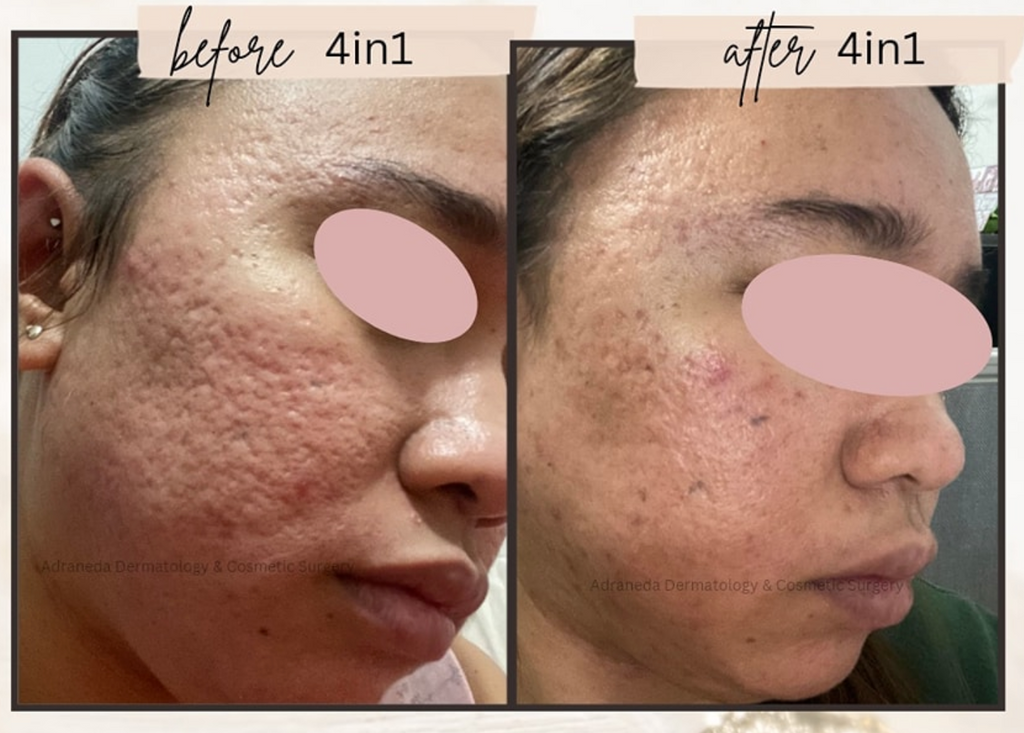Comprehending the Various Skin Disease and Reliable Treatment Alternatives for Acne Scars
Acne scars stand for a complicated interaction of skin problems that significantly effect individuals' self-esteem and total skin health. As we explore the landscape of acne scar management, it becomes apparent that the journey toward clearer skin may involve more than just topical services.
Types of Acne Marks

In comparison, hypertrophic scars arise from an overproduction of collagen during the recovery process, causing increased areas on the skin. These marks are usually solid and can vary in color, occasionally appearing red or darker than the surrounding skin.
Recognizing these kinds of acne marks is essential for establishing a reliable treatment plan - skin rejuvenation treatments. Alternatives might include chemical peels, laser therapy, microneedling, or facial fillers, tailored to the certain mark type. A complete appointment with a dermatologist can help establish the most suitable intervention, considering the person's skin kind, mark intensity, and overall skin wellness
Root Causes Of Acne Scarring
Scarring takes place as a result of the body's natural recovery response to inflammation and injury brought on by acne lesions. When acne types, it activates an inflammatory feedback, leading to the release of various cytokines and growth factors that promote healing. This procedure can occasionally lead to too much cells development or insufficient repair service, resulting in scars.
The primary root causes of acne scarring include the seriousness of the acne itself, duration of the lesions, and private skin types. Extreme inflammatory acne, such as cysts and blemishes, is more probable to result in scarring due to much deeper cells damage. In addition, incorrect handling of acne lesions, such as picking or pressing, can intensify cells injury and inflammation, enhancing the likelihood of scarring.
Hereditary tendency also plays a significant duty; individuals with a family background of scarring are at a higher threat. Skin kind and shade can affect scar formation, as darker skin tones might experience post-inflammatory hyperpigmentation, while lighter skin may develop atrophic marks.
Ultimately, understanding these reasons is crucial in handling acne and reducing the potential for scarring.

Therapy Options for Scarring
Reliable therapy alternatives for acne scarring vary depending on the kind and extent of the scars. Generally categorized into atrophic, hypertrophic, and keloid scars, these conditions call for tailored approaches for optimal results.
For atrophic scars, which are identified by a loss of cells, treatments such as chemical peels, microdermabrasion, and laser treatment are frequently employed. These approaches promote skin revival and promote collagen production, thereby boosting skin texture. Subcision, a minimally intrusive procedure, can likewise work by damaging up coarse bands underneath the skin.
Keloid and hypertrophic scars can be more testing to treat. Alternatives include corticosteroid shots to minimize inflammation and flatten the marks. Sometimes, cryotherapy or laser therapy might click for more info be recommended to decrease their appearance.
Surgical alternatives are available for extreme scarring, where excision or skin grafting may be required. It's vital for people to consult with a skin doctor to evaluate their certain mark type and go over one of the most suitable therapy strategy. Combining several therapies usually yields the very best outcomes, ensuring that each individual's one-of-a-kind skin condition is resolved efficiently.
Home Remedies and All-natural Solutions
All-natural remedies and natural remedy can supply an accessible method for people looking for to boost the appearance of acne scars (acne treatment for sensitive skin). Numerous ingredients located in the home kitchen area have demonstrated prospective advantages in improving skin appearance and advertising recovery

One more effective alternative is lemon juice, which functions as a natural exfoliant and can lighten hyperpigmentation. It needs to be used meticulously, as it may trigger photosensitivity. Oatmeal masks are also useful; their mild exfoliation can assist remove dead skin cells while comforting irritation.
Essential oils, such as tea tree oil and lavender oil, can additionally support scar recovery due to their antimicrobial homes. It is crucial to do a spot test prior to using any type of solution to make sure there are no damaging reactions. These all-natural solutions can be a complementary strategy in the journey to diminish acne marks.
Stopping Future Scarring
Taking on a proactive method to skincare can substantially lower the risk of developing future acne scars. Regular cleansing, peeling, and hydration can aid maintain skin wellness and protect against clogged pores.
Additionally, avoiding the temptation to pick or press acne sores is important, as this can bring about swelling and succeeding scarring. Rather, individuals must concentrate on using topical therapies that advertise healing and decrease inflammation. Components such as salicylic acid, benzoyl peroxide, and retinoids are understood for their effectiveness in look at more info handling acne and reducing scars.
Sun security is another important part; direct exposure to UV rays can restrain and dim marks recovery. Making use of a broad-spectrum sunscreen daily can mitigate these results.
Finally, maintaining a healthy and balanced diet plan rich in anti-oxidants and staying moisturized assistances skin regeneration. By executing these safety nets, individuals can significantly lower their threat of future scarring and promote overall skin health and wellness.
Conclusion
In verdict, an extensive understanding of acne marks, including both atrophic and hypertrophic types, is important for reliable treatment strategies. Customized treatments, including specialist treatments and natural remedy, can considerably boost skin appearance and appearance. Precautionary actions likewise play an essential duty in lessening future scarring. Examination with a dermatologist continues to be imperative to design tailored techniques that take into consideration private skin types and mark intensity, inevitably boosting the effectiveness of scar monitoring techniques.
Acne marks stand for a complicated interaction of skin problems that substantially effect people' self-confidence and general skin health and wellness. The two primary categories of acne scars are atrophic and hypertrophic scars. These marks are further classified into three subtypes: ice choice scars, which are narrow and deep; boxcar marks, which are broader and have distinct edges; and rolling scars, which create a wave-like appearance due to uneven skin appearance.
An extensive assessment with a dermatologist can important link help figure out the most proper intervention, taking into account the person's skin kind, scar extent, and overall skin health and wellness.
Examination with a skin specialist remains vital to create customized approaches that take into consideration private skin types and mark intensity, eventually enhancing the efficiency of scar monitoring techniques.